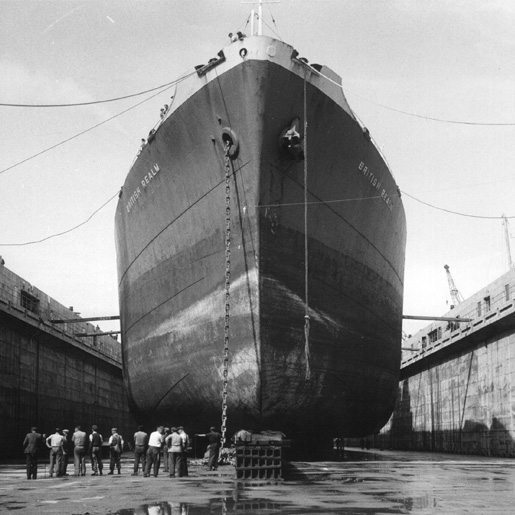

By Lynne Vosper
This Bartlett Blog looks at the official naming ceremony of the Queen Elizabeth Dock in Falmouth in May 1958 and the arrival of British Realm, the first ship to enter the dock.
Queen Elizabeth Dock was the Falmouth Docks and Engineering Company’s greatest achievement, representing the largest civil engineering project they had ever undertaken. At the time, it was the largest privately-owned dry dock in the country, and today it remains one of the largest docks in the UK.
The new No.2 Dock was named the Queen Elizabeth Dock on 16 May 1958 by HRH Prince Philip, Duke of Edinburgh.
Before the naming ceremony the Duke of Edinburgh made an extensive tour of the yard, visiting workshops, meeting personnel and viewing the docks from the seaward side from Mr Silley’s motor launch.
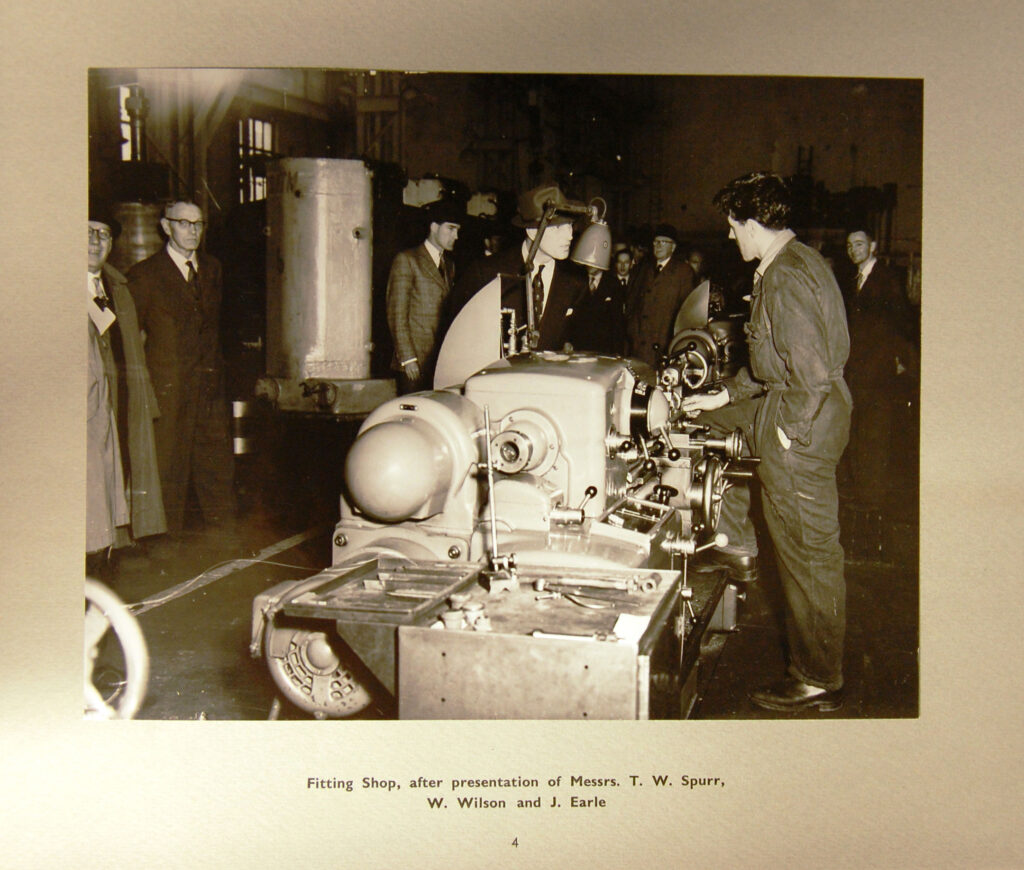
Fitting Shop, after presentation of Messrs TW Spurr, W Wilson and J Earle.
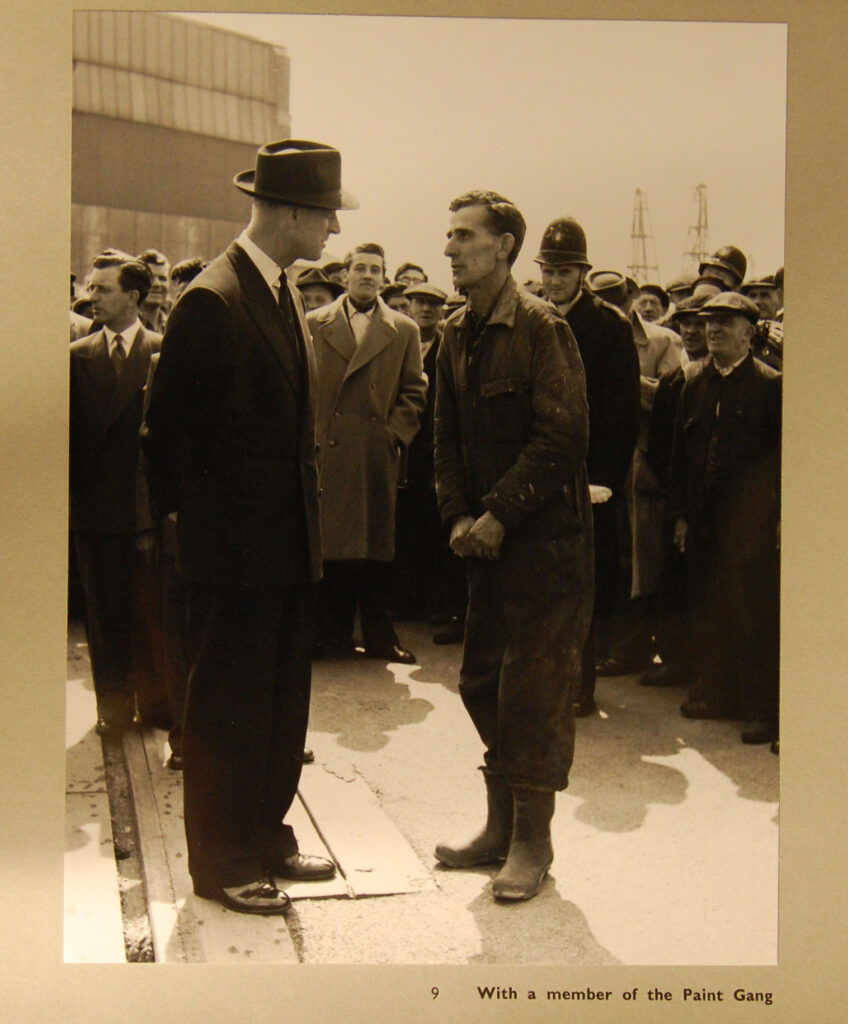
With a member of the Paint Gang.
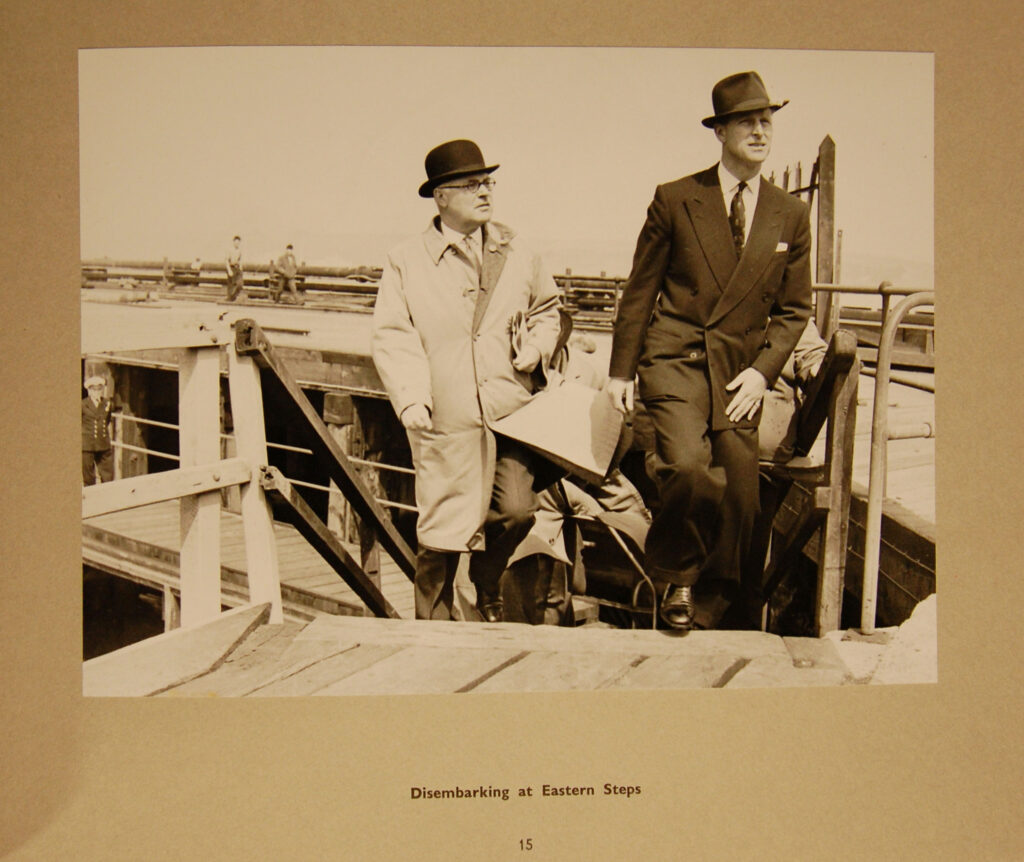
Disembarking at Eastern Steps with Mr HAJ Silley.

Presentation of Messrs AE Underwood and JD Norfolk.
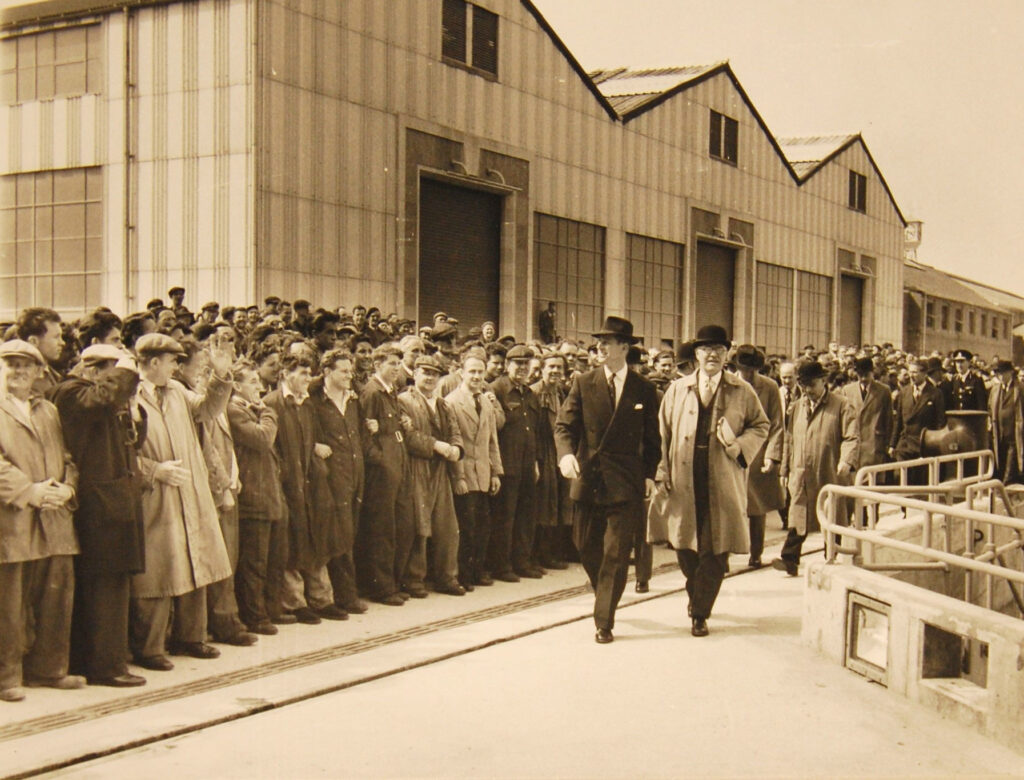
HRH Prince Philip, Duke of Edinburgh and Mr HAJ Silley, Chairman of Falmouth Docks and Engineering Company at the naming ceremony of the Queen Elizabeth Dock on 16 May 1958.
A Falmouth Packet newspaper supplement dated 23 September 1960 to celebrate one hundred years of Falmouth Docks, records that the Duke of Edinburgh paid tribute to the enterprise of the Docks Company and said, “This dry-dock is ample proof that the owners are neither old-fashioned, un-enterprising, nor stick-in-the-mud. It is quite an achievement purely as a feat of engineering, but as a gesture of confidence in the future it is of untold value. This is a great day for Falmouth and for the ship-repairing industry in this area. It also seems a most suitable way of celebrating the centenary of Falmouth Docks”.
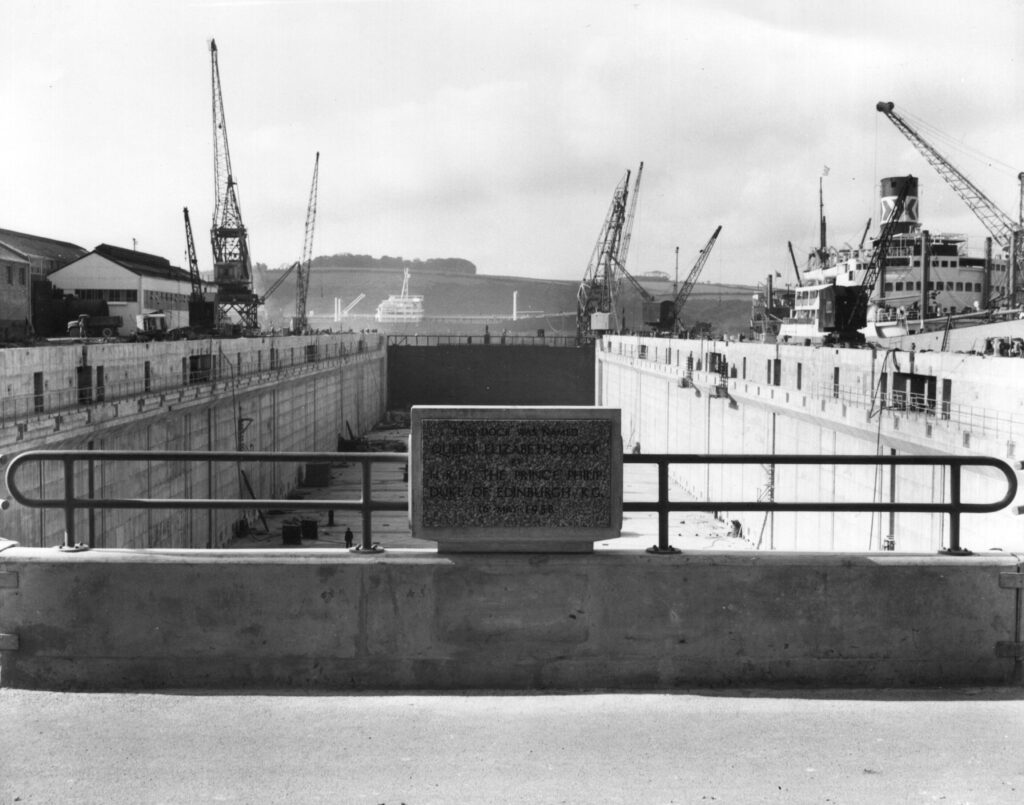
The commemorative plaque at the head of the dry dock.
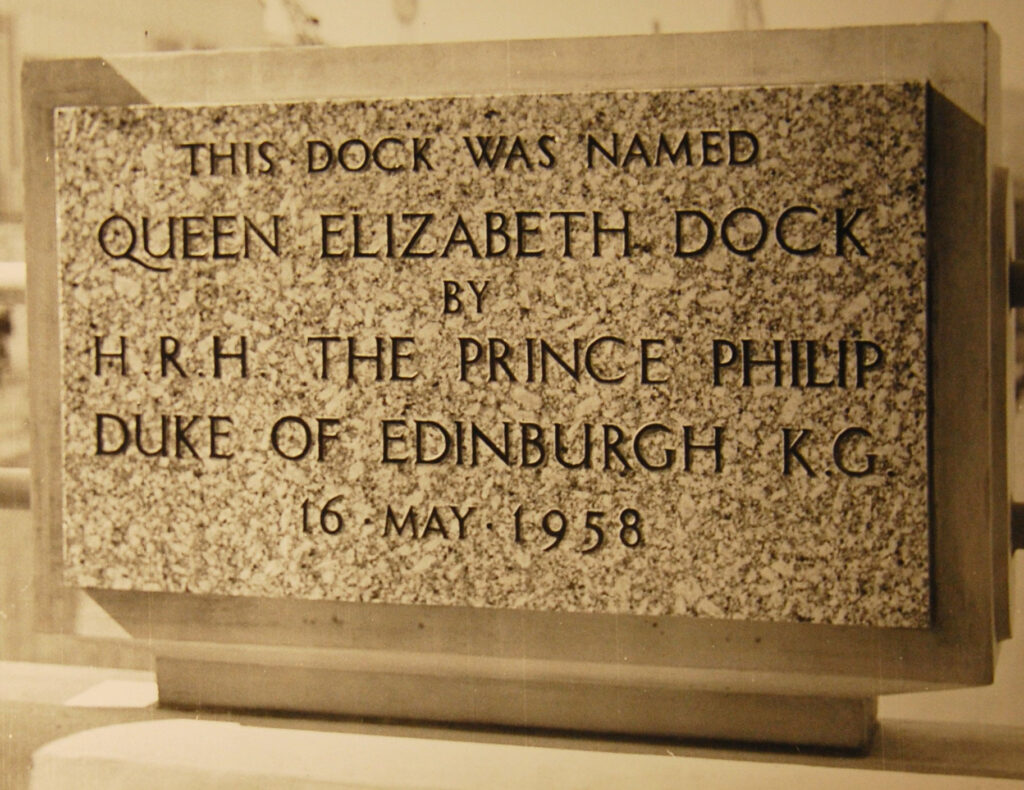
The commemorative plaque.

An entry in the Falmouth Harbour Master’s Journal No 36 records the naming ceremony on Friday 16 May 1958.
During the period between the naming of the Dock on 16 May 1958 and the entry of the first ship on 4 September 1958 the installation of machinery and equipment was completed.
The dock was a state-of-the-art facility with new modern machinery and production methods, modernised and re-equipped workshops, two newly opened wharves and a fleet of six tugs.
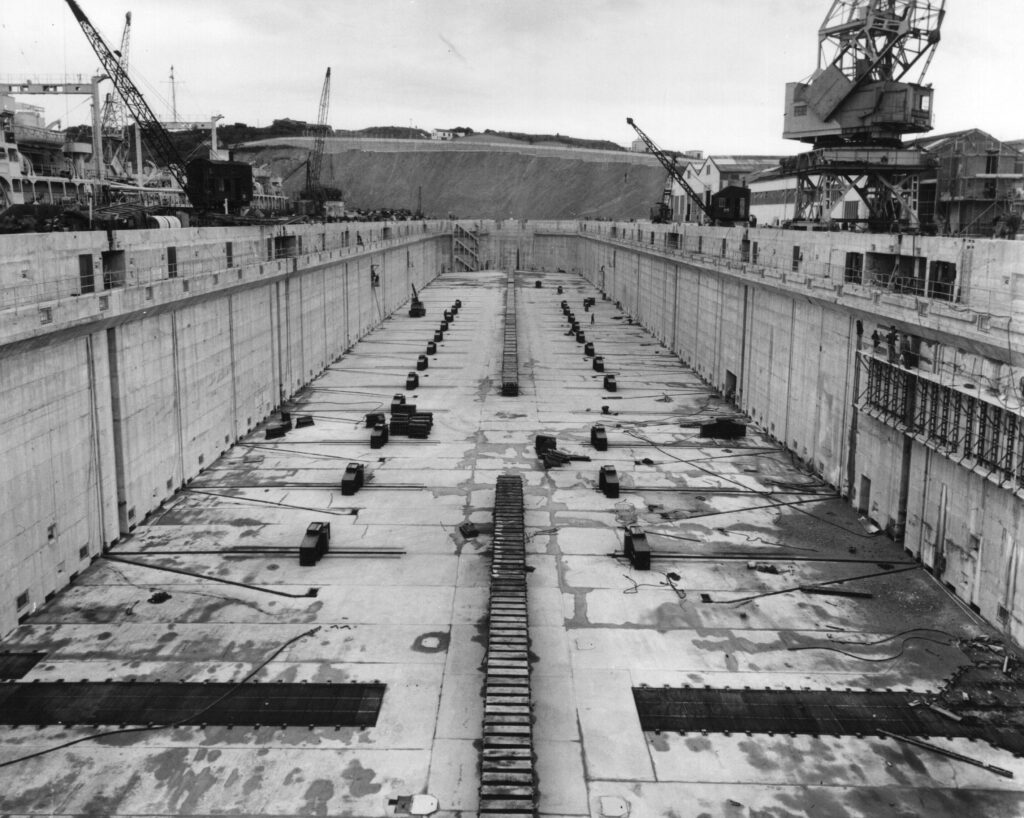
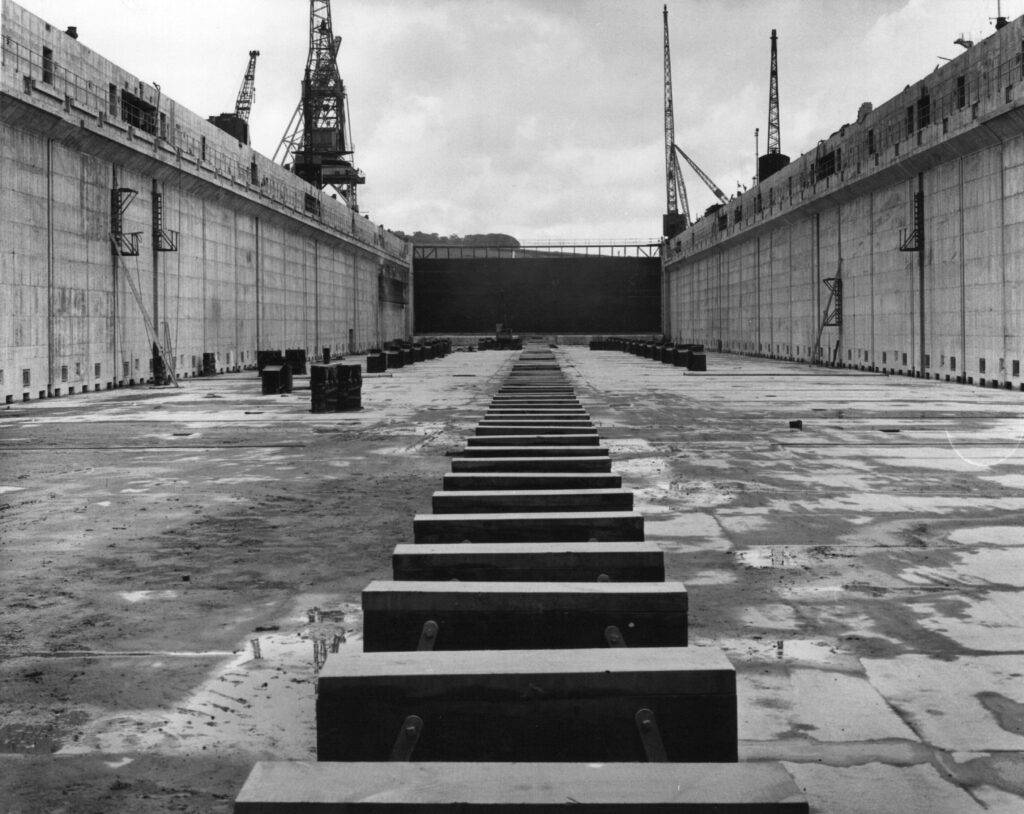
These images of the dock show the keel blocks and traversing bilge blocks, the first of their kind to be used in a British dry dock. These blocks are positioned mechanically to suit the beam of the ship to be docked and are elevated hydraulically to suit the rise of the floor of the ship.
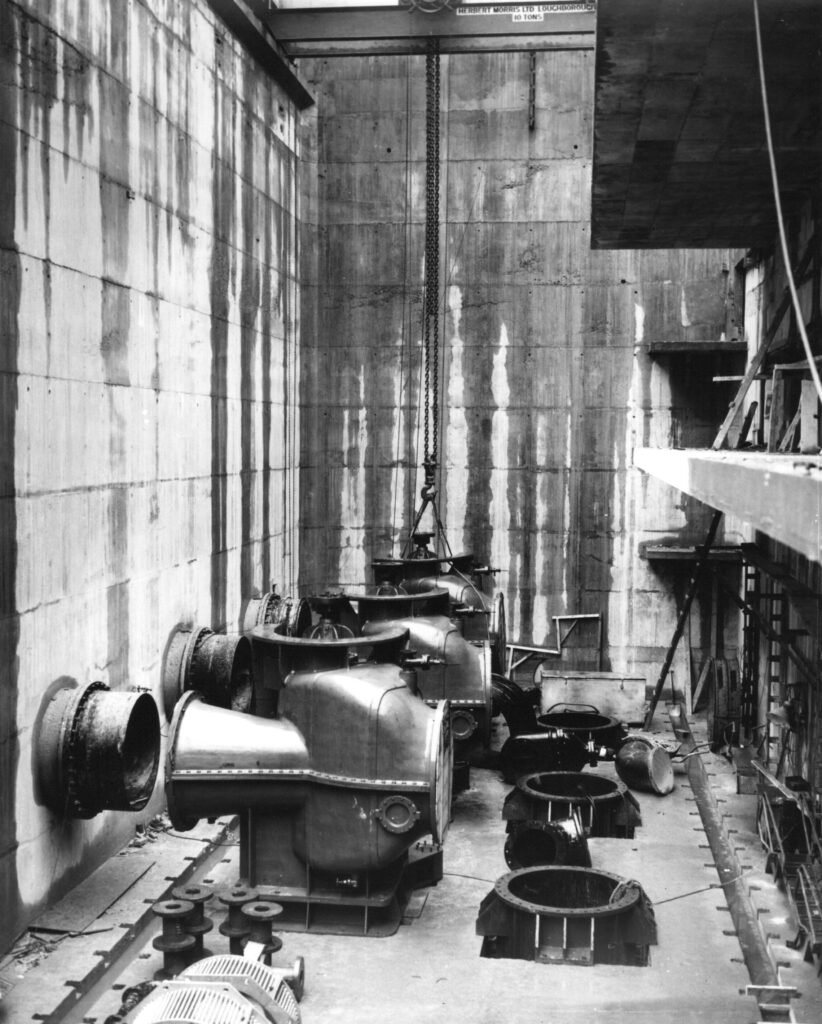
Three 48-inch diameter, 650 horse-power electric pumps were installed, supplied by Messrs Dysdale & Company Limited, capable of de-watering the new dock, containing 28 million gallons of water, in less than three hours if no ship was occupying the dock.

Six powerful double-speed electric capstans were installed, situated each side of the dock at the entrance, mid length and head, capable of a pull of 16 tons at the lower speed.
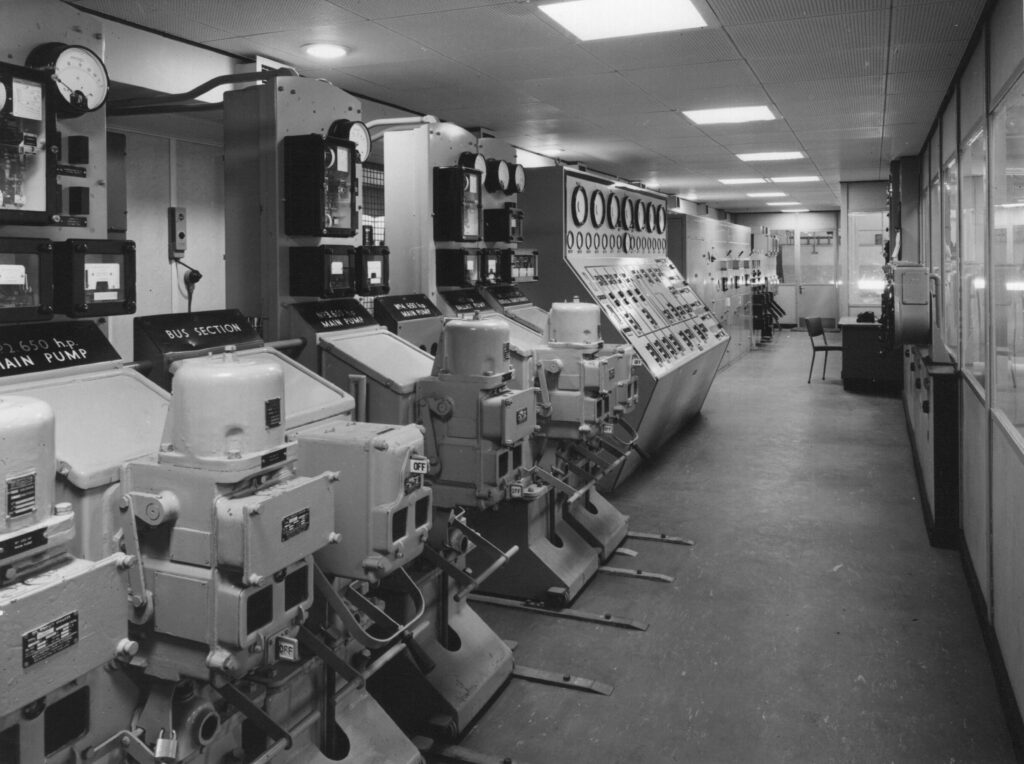
The control room for the flooding and emptying of the Queen Elizabeth Dock. The other three docks can also be controlled from this point.

The pump room for Queen Elizabeth Dock. The three 48-inch diameter electric pumps can pump out the 28 million gallons of water in the dock in three hours.
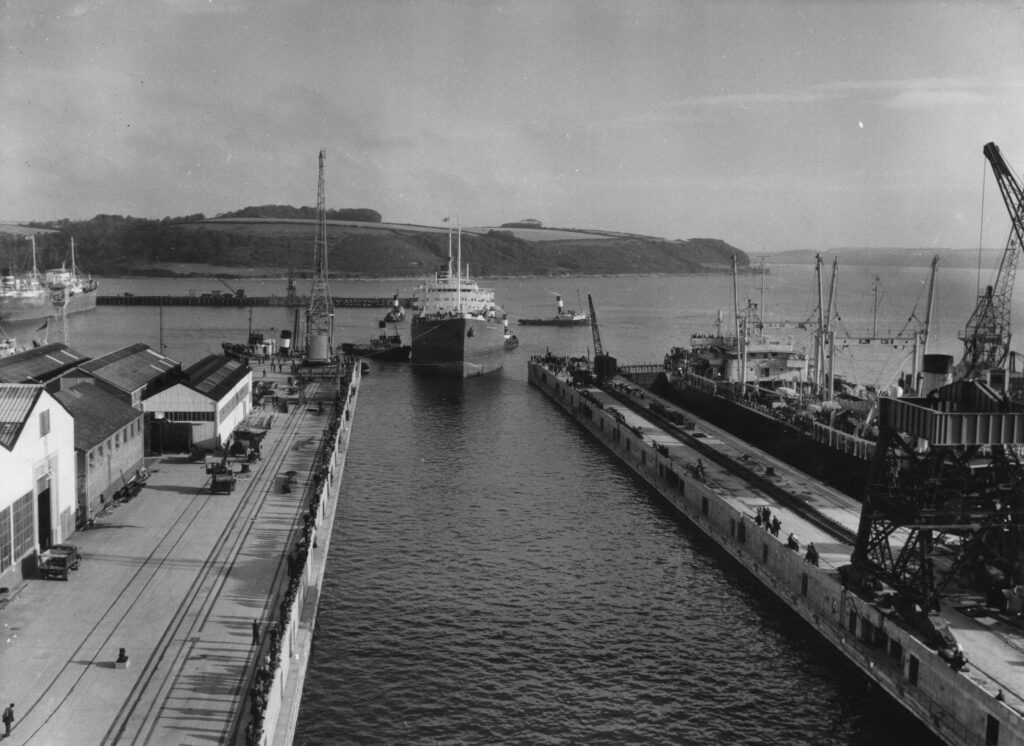
The 28,598 -ton BP Tanker British Realm entering the enlarged dry dock at Falmouth Docks on 4 September 1958. Employees of Falmouth Docks can be seen lining the sides of the dock to witness this momentous event.
On 4 September 1958 BP Tanker SS British Realm became the first ship to enter the new dry dock at Falmouth Docks. In the words of the Falmouth Packet newspaper of July 1957 Falmouth was ‘ready to deal with supertankers’. The Queen Elizabeth Dock was the largest civil engineering project ever undertaken by the Falmouth Docks and Engineering Company and the company’s greatest achievement.
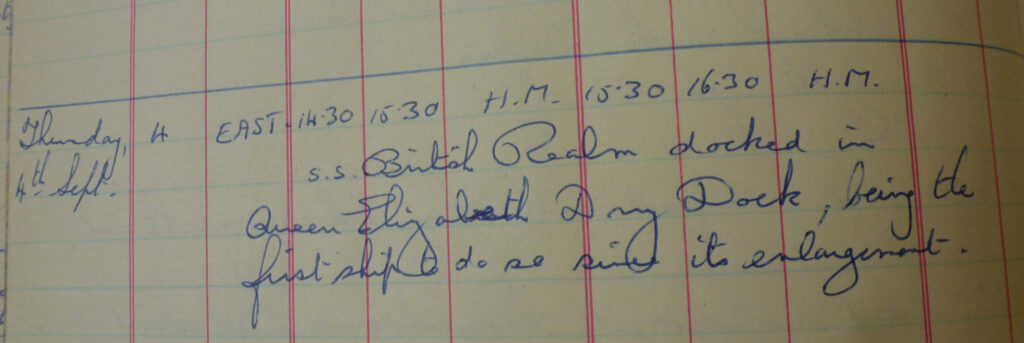
An entry in the Falmouth Harbour Master’s Journal No 36 records that SS British Realm was the first ship to enter Queen Elizabeth Dock on Thursday 4 September 1958.
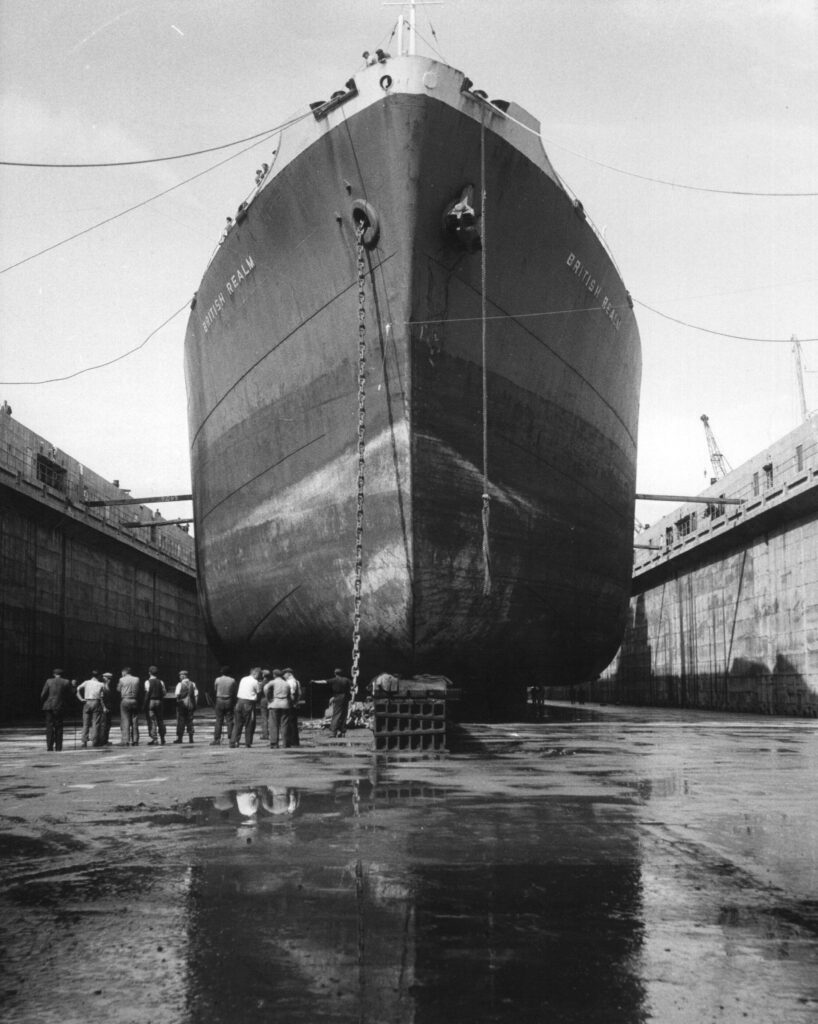
This dramatic image shows the 28,598-ton British Realm in the enlarged dry dock at Falmouth Docks during September 1958.
A commemorative booklet ‘Queen Elizabeth Dock, Falmouth’ was sent to the home address of every employee of Falmouth Docks as a souvenir of the naming of the dock on 16 May 1958 which gives full technical details of all the equipment installed at the dock. It was produced by Falmouth Docks & Engineering Co. Ltd., and Silley Cox & Co. Ltd.
At that time, the Queen Elizabeth Dock was the largest privately owned dry dock in the country and today the dock remains one of the largest in the UK.
The images in this Bartlett Blog are from two NMMC archive photograph collections. The first is a collection of officially commissioned original photographs of the construction of the Queen Elizabeth Dock at Falmouth from start to finish from 1956 to 1958. They were taken by R & H Green and Silley Wier Limited of Plaistow for the Falmouth Docks and Engineering Company Limited.
There are also photographs taken at the official naming ceremony of the Dock by the Duke of Edinburgh on 16 May 1958. Detailed information in a speech by Mr W Walton Lund, MIME, MINE, Director and General Manager of Messrs Silley, Cox & Company, made to the Royal Institution of Cornwall on 27 February 1959, and a commemorative booklet entitled ‘Queen Elizabeth Dock, Falmouth’, issued to all employees on the completion of the Dock, have been invaluable in providing captions to accompany the photographs.
Typed copy of a speech by Mr W Walton Lund, MIME, MINE, Director and General Manager of Messrs Silley, Cox & Company, made to the Royal Institution of Cornwall on 27 February 1959.
Port of Enterprise, the Story of Falmouth by ER Forestier-Walker.
Queen Elizabeth Dock, Falmouth – A commemorative booklet issued to all employees on the completion of the dock.
Sailing Ship to Super Liner, Falmouth Docks 1860-2010 by David Barnicoat.
Falmouth Docks 1859-2007, From Sailing Ships to Super Tankers and Cruise Liners. Unpublished MA Dissertation (University of Exeter) by Lynne Vosper, 2007
The Bartlett Blog is written and produced by the volunteers who staff The Bartlett Maritime Research Centre and Library of National Maritime Museum Cornwall. This blog post was written by Lynne Vosper, a Bartlett Library volunteer.
The Bartlett Maritime Research Centre & Library holds a Collection of over 20,000 volumes and offers access to one of the finest collections of maritime reference books, periodicals and archival material. The Bartlett Blog reflects the diversity of material available in The Bartlett Library.

National Maritime
Museum Cornwall Trust
Discovery Quay
Falmouth Cornwall
TR11 3QY
View Map
See our opening hours
Tel: +44(0)1326 313388
Email: enquiries@nmmc.co.uk